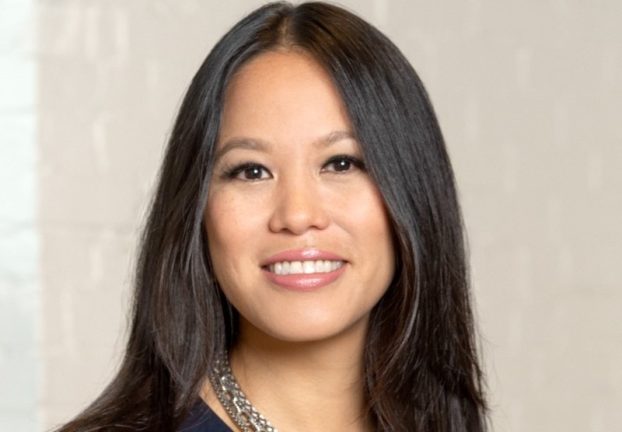For many copywriters and art directors, cutting their teeth on Volkswagen ads make their career.
One was Gary Prouk, co-founder of Scali McCabe Sloves and creative director of DDB Canada for nine years until 1977.
While eking out at age 20 an early existence in advertising at Ronalds-Reynolds, Prouk remembers ripping ads he admired from magazines and newspapers and pinning them on his office wall.
Not long after, a colleague said: ‘You must really like Doyle Dane Bernbach.’
Prouk felt, indeed, in sync with all that Bill Bernbach, Helmut Krone, Bob Levenson and others were doing at DDB at the time.
As it happened, a few years later Ronalds-Reynolds began doing ads for Volkswagen, and still later Prouk joined DDB.
And on his first visit to the DDB headquarters in New York, he remembers walking down a long corridor, the greatest advertising talents of the day working in rooms on either side.
and on the wall were many of the color proofs of black-and-white print ads he had earlier ripped out and stuck on his office wall.
The moment was exhilarating. ‘It was as if black-and-white television had suddenly gone color for me.’
Years later, Prouk and his creative team at DDB were invited out to Volkswagen Canada’s main offices on Eglinton Avenue in Toronto to test-drive the new VW 1500 sedan.
They gathered in the headquarter’s inner courtyard to hear Porsche dealer Ludwig Heimrath introduce the car.
The one-time-only racer suddenly boasted the new sedan could not be rolled. At which point, Heimrath took the wheel and drove a few fast laps of the courtyard to demonstrate the car’s sure four-wheel stance.
Prouk, a man not to be outdone in anything, promptly got behind the steering wheel for a test-drive of his own.
Charging around the courtyard, sure enough, he rolled the car, twice. And finally, coming to a rest on the car’s hood, he found himself dangling upside down from his seat belt.
No sooner had Prouk gathered his senses than he made out a number of VW executives running across the courtyard towards the car.
And after he was hauled out and dusted off, one VW executive announced: ‘I hope you like the car you just bought?’
DDB Canada was promptly billed $4,000 for the car, now crumpled in a ball of twisted metal.
For Allan Kazmer, international creative director at DDB Needham, leaving in 1981 a prized creative position at Toronto-based McCann-Erickson was no easy decision.
Wayne Twaits, president of DDB Canada at the time, knew of only one way to lure him away from Canada’s then hottest agency.
Kazmer remembers: ‘He said, would you at least fly to New York and meet Bill Bernbach?’
Bernbach had long been Kazmer’s hero and mentor. He found he could not pass up the chance to meet him. But his act of homage to Bernbach was repaid with unexpected humbleness.
‘I walked into Bill’s office,’ Kazmer says. ‘He was a giant and I was nervous. But he just walked round his desk with his hand out-stretched to say `Mr. Kazmer, we are so honored that you take the time from your busy schedule to consider even working for us.”
‘No, no Mr. Bernbach, you have it all wrong,’ he says.
Kazmer recalls thinking as the great man pumped his hand firmly: ‘He could have asked me to kiss his ring. But no, he just said he had heard great things about my work.’
Kazmer was being schmoozed, and he knew it.
Later, at lunch at New York’s prestigious Four Seasons restaurant with Bob Levenson, Kazmer asked for a cold beer as an aperitif.
Taken aback, the cloud-sniffing waiter said he would try and ‘find’ one, before turning on his heels.
Levenson at once waved the waiter back.
‘Walter, do you know who this man is?’ he said. This is Allan Kazmer, the finest advertising man in Canada. I’m trying to sweet-talk him. And you say you will try to `find’ him a beer?
‘Walter, I want you to find not only a beer, but many beers. And put them on ice. When you see his glass is half-empty, bring him another beer until he tells you that’s enough. Is that clear, Walter?’
And as the lunch grew to a close, Levenson revealed to Kazmer a prized secret of how award-winning VW headlines were made.
He said they were typically written as if with a comma at their end, followed by ‘schmuck’.
A puzzled Kazmer asked what that meant. Levenson replied: ‘Ever wonder how the man who drives the snowplow gets to the snowplow, schmuck?’
Levenson was pointing to the celebrated ‘snowplow’ spot, in which a voice-over asks how the snowplow driver gets to work.
The viewer then sees a ‘bug’ driving through a snow drift, drawing up to a garage, and the driver getting out of his Beetle and climbing into the snowplow.
‘Now you know,’ the voice-over concludes.
Much is made in Volkswagen advertising lore of copywriters popping round office doors and suggesting headlines to a group of stumped colleagues.
One famous instance concerns ‘Lemon,’ in which art director Helmut Krone had a photo of an apparently perfect Beetle in his hand but no headline with which to underline VW’s strict inspection procedures.
His answer came when Rita Selden, a DDB writer walking by his door, suggested, ‘Why don’t you just say `Lemon’?’ And he did.
Years later, Philipe Garneau, a DDB Needham writer, repeated just such a feat.
The team of Marta Cutler and Duncan Bruce had been working on a print ad for Corrado, a fast, sleek new VW, and were stumped.
They told Garneau as much as he walked by, to which he replied: ‘From 0 to what seems to be the problem, Officer?’
And that became the headline.
Garneau explains those working on VW ads come to have a profound knowledge of what goes into them. So anyone can contribute a headline at an instant as long as they have done their homework beforehand.
Critics of VW advertising often insist DDB Needham’s output could hardly be bland given they work with such a great client as Volkswagen. That makes it easier, right?
Wrong, say insiders. Getting approval from Volkswagen Canada over the years of ad concepts is no cake-walk.
An example: In 1987, Kazmer and Steve Thursby pitched a TV spot for the Jetta called ‘S-Bend’.
The 30-second spot was to open on a picturesque twisting highway, with a series of cars coming round a corner.
A voice-over would begin: ‘What you are about to see is a marvellous collection of fine German Automobiles. Stop us when we get to one you can afford.’
First came a Mercedes Benz, then a BMW sedan, followed by an Audi and finally a VW Jetta.
And, as the Jetta came to a halt, the voice-over announced: ‘The Volkswagen Jetta. The affordable German-engineered road sedan.’
VW executives were nervous. They saw little worth in comparing a Jetta to a Mercedes or BMW, much less Audi, their own product.
This was comparative advertising. Not the done thing.
Kazmer and Thursby were asked to go back and come up with new ideas. This they did, working on new ads. But, in their hearts, they knew ‘S-Bend’ was the one.
So two weeks later, they returned with four ideas. They presented the first three, then rolled out ‘S-Bend’ yet again. Pounding the table, Kazmer said ‘S-Bend’ was the ad Volkswagen ought to choose.
Hans Holback, a VW marketing executive, erupted: ‘I don’t believe you people. We’ve gone over this.’
Kazmer stood his ground, insisting ‘S-Bend’ was the best idea of all. But once again, they were told to come back with new ideas.
Thursby praises Kazmer for sticking to his guns, and Volkswagen agreed to hear his case in full.
‘This was very unusual,’ Thursby says. ‘But it stemmed from [Kazmer’s] belief in the creative product. And a belief in the creative product being tight all the time.’
The third time Kazmer and Thursby returned, Holback stopped them just before they were about to unveil their fourth idea.
‘Let me guess, S-Bend?’
Now the argument was more heated than ever. Finally, a young VW executive broke in with a diagram scribbled on his note pad.
He pencilled in down a vertical line the names Mercedes, BMW, Audi and Jetta. The common thread, he said, was each was a German-engineered sedan.
Then he drew a horizontal line, along which he wrote the names of rival Japanese sedans comparable in price to Jetta.
The message of ‘S-Bend’, he concluded, was a German-engineered car could be had for the price of a Japanese import.
Suddenly, agreement ran round the table and ‘S-Bend’ was approved.
Years later, at Holbach’s retirement dinner, the VW boss remembered his clash of wits with Kazmer over ‘S-Bend’.
‘Thank you for being so bloody persistent,’ he told the DDB creative team. ‘You were right.’
Bill Wilson, VW advertising and merchandising manager, was present at the Jetta presentations.
‘DDB showed us that, over a two to three-month period, they were listening to us, and retuning and retuning to make the credibility of ‘S-Bend’ stronger,’ Wilson says. ‘They took account of our concerns.’
He says he admires copywriters and art directors who can face the dust of the arena.
‘I, personally, hate a creative group that will roll over suddenly, saying, `If that is what you want, we’ll give it to you,’ Wilson says.
‘We would rather get the answer that satisfies everyone,’ he says.
‘Sometimes we get there quickly, other times we argue like hell. And that’s DDB’s strength: they don’t roll over easily.’























